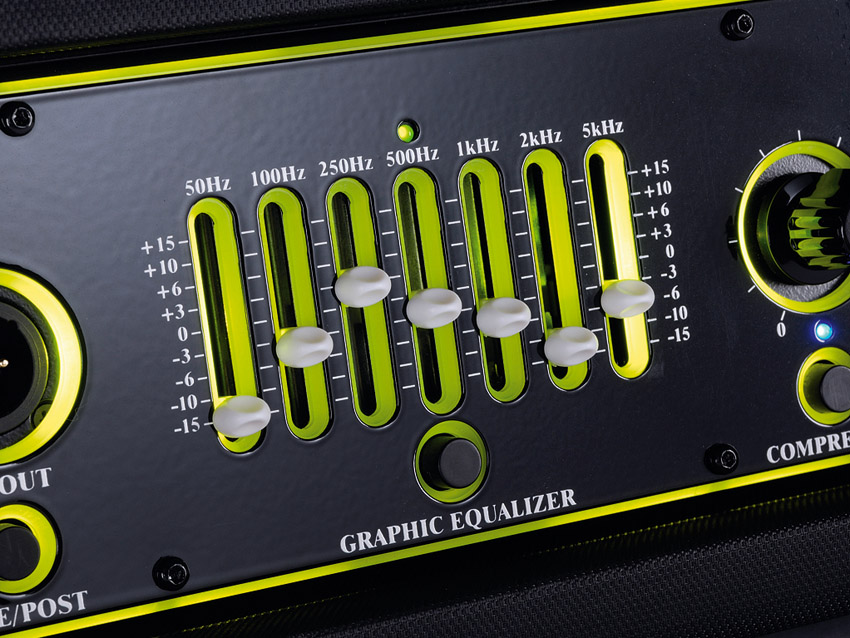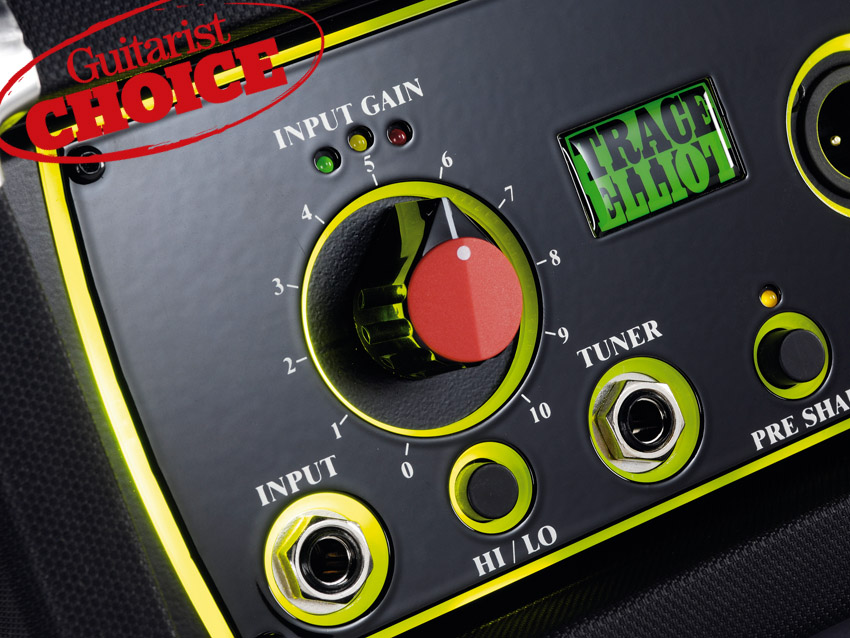MusicRadar Verdict
If a real bass stack does it for you then this is a winner, but if you want something more compact then the fresh combo versions of both seven and 12-band EQ models will be available soon.
Pros
- +
Trademark Trace sounds. Solid delivery. Cabinet design. The extras.
Cons
- -
The socket arrangement isn't great.
MusicRadar's got your back

Trace Elliot AH600-7

Trace Elliot AH600-7

Trace Elliot AH600-7
Without doubt, anything electronic these days is in a constant state of flux. Whether it be a domestic appliance, HD television or the latest mobile phone - as soon as it's on the market, the next version is already designed and entering the pre-production stage.
Fortunately amplification design is far less prone to this constant reinvention, and yet nothing is immune to progress.
This new Trace Elliot head is a case in point. The original seven-band design was a big success, but with a few modifications and a hike in the power rating, this new version leaps forward with new life and vitality.
So what exactly is all the fuss about? Well, although this is the 'baby' of the updated designs (the 12-band EQ designs include a valve drive circuit), it still offers a good variety of sounds with significant output and with an illuminated front panel, no-nonsense layout, and tough covering and metal corners for protection - this could be nothing but a Trace Elliot head.

The general design has been well tried and tested and is in no need of an overhaul, but electronically it's now a more efficient and powerful beast than the original.
That illuminated front panel is eminently gig-friendly and the single input makes use of an associated Hi/Lo switch for bass-type matching. Control layout is traditional for the brand and logically arranged, but we would still prefer the connection points for effects, DI and Line Out to be at the back.
Trace Elliot always supplies heads and cabinets with slip covers and leads and here the head also comes with the BFC-4 four-function foot controller at no extra cost.
Sounds
In order to get the full benefit from this head, we've chosen the 2 x 10 and 1 x 15 cabinets. Although you can achieve good results with either of these (or indeed any of the wide range of cabinets available) this combination offers excellent sound and style versatility.
Both cabs have Speakon and jack sockets, they're front-ported, tuned and constructed from poplar so are light in weight and relatively easy to transport.
Right from the start the sound is classic Trace Elliot, with clean note definition, plenty of available tone manipulation and plenty of trouser-flapping low-end depth.
The pre-shape circuit is a great feature that provides a distinctive voice from the moment you switch it in. Whether traditional tones or a more edgy modern sound is required you can use this pre-shape as a start point then simply adjust the EQ sliders to fine tune to your preference. But, of course, the EQ is fully capable of providing a rich variety of tones with or without the pre-shape option.
The fully adjustable compressor is mightily effective too. It's immediately apparent even on the lowest of settings but it really tightens the sound as you pile it on, enabling you to play harder and get a real boost from your playing.
But like the amp as a whole, everything works to the fullest extent - there are no extreme or unusable sounds, just plenty of manipulation throughout the sensible tonal range. What more could you ask for?
Trace Elliot has provided this head with solid tonal response and clarity set at a new level. Coupled to the cabinets, this is one of the best Trace bass rigs we've ever tested. It's a real wall of sound from a medium stack and it possesses a size-to-sound power ratio that's extremely impressive.
The bass frequency response is fabulous and when you consider this is the lower end of what's available within the range as a whole, you can't help but feel that the brand name has the potential to reach new heights. Go on, plug in.
Learn production, DJing and songwriting from pros like Fraser T Smith, Carl Cox, Skream and Joe Goddard with Whatclass
Native Instruments’ Kontrol S MK3 MIDI keyboards just added several features that DAWless music producers have been asking for
“You're by far the best guy that we've tried. I would love to have you in the band”: So why did Trent Reznor turn down Richie Kotzen for Nine Inch Nails?










